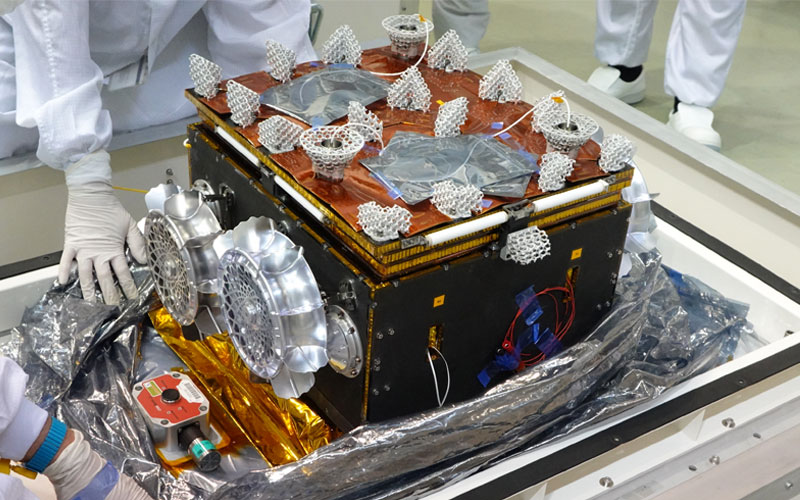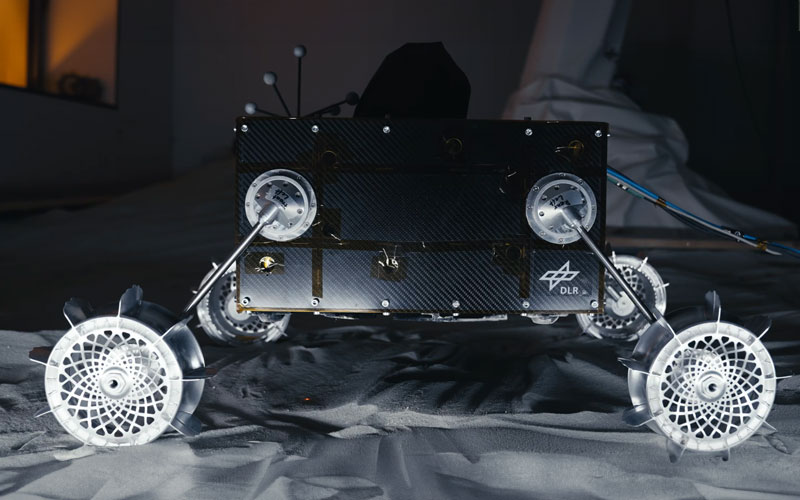
A small rover built by DLR and CNES to explore the surface of the Martian moon Phobos has arrived in Japan ahead of a 2026 launch aboard a Mitsubishi Heavy Industries H3 rocket. When it touches down in 2027, it will make history as the first rover ever to explore the surface of Phobos.
The 25-kilogram rover is called IDEFIX, after the small white terrier from the Asterix comics. It will hitch a ride to Phobos aboard Japan’s Martian Moon eXploration (MMX) probe.
Following its arrival in Japan, DLR and CNES reception teams got to work unpacking the rover from its shipping container and charging its onboard batteries. This step is an important one to ensure the performance of the batteries during integration with the MMX probe and the wait for the 2026 launch.
Unlike a mission to the surface of Mars itself, the ultra-low gravity environment of Phobos has allowed the IDEFIX team to devise a surprisingly low-tech landing procedure.
The MMX probe will eject the rover at an altitude of between 40 and 100 metres from the surface of the Martian moon. According to Dr Markus Grebenstein from the DLR Institute of Robotics and Mechatronics, it will then perform several “somersaults,” which will allow it to survive the impact with the Moon’s surface. Its small, compact landing configuration is also a key element of the rover’s ability to survive the impact.

Once on the surface of the moon, the rover will deploy its four wheels, enabling it to right itself in preparation for a three-month mission phase. The landing phase will need to be completed fully autonomously to ensure its success.
“The biggest challenge for IDEFIX is that it has to carry out many operations – particularly the uprighting after landing on Phobos – fully autonomously in order to survive,” said Stéphane Mary, IDEFIX project manager at CNES. “It wouldn’t survive if it waited for commands from Earth to arrive.”
After touching down and completing an initial testing phase, the rover will begin searching for and analyzing areas of scientific interest. Its activities on the surface of Phobos will be groundbreaking as it will be the first time wheeled exploration has been undertaken on a celestial body with less than a thousandth of Earth’s gravitational pull. To ensure it doesn’t drift off the moon’s surface, IDEFIX will travel just a few millimetres per second.




